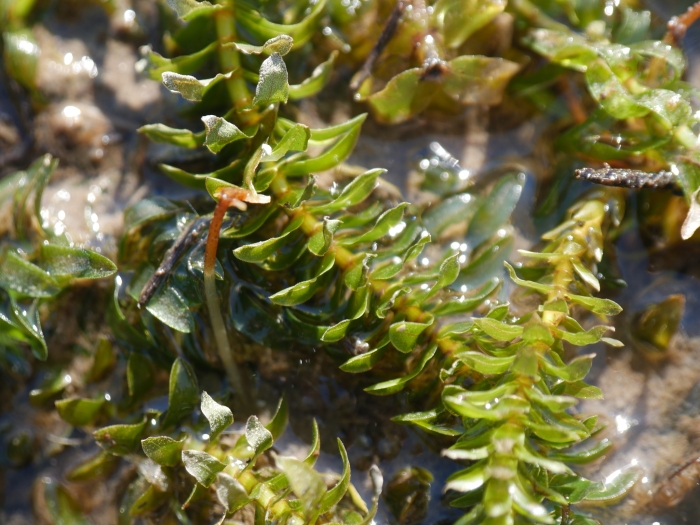Canadian Waterweed
(Elodea canadensis)
Canadian Waterweed (Elodea canadensis)
/
/

Johan Kjær Prehn
CC BY 4.0
Image By:
Johan Kjær Prehn
Recorded By:
Copyright:
CC BY 4.0
Copyright Notice:
Photo by: Johan Kjær Prehn | License Type: CC BY 4.0 | License URL: http://creativecommons.org/licenses/by/4.0/ | Rights Holder: Johan Kjær Prehn | Publisher: iNaturalist | Date Created: 2021-09-05T10:25:40-07:00 |
















































Estimated Native Range
Summary
Elodea canadensis, commonly known as Canadian Waterweed or Canadian Pondweed, is a semi-deciduous perennial aquatic herb native to a variety of freshwater habitats including ponds, lakes, slow-moving streams, and marshes in North America. It is often found in nutrient-rich waters and can adapt to a range of water conditions, from shallow to deep aquatic environments. Typically, it grows indefinitely at the stem tips, with single specimens reaching lengths of 3 meters or more. The plant lives entirely underwater except for its small white or pale purple flowers, which float at the surface from May to October and are attached to the plant by delicate stalks known as hypanthia. These flowers are not particularly showy but are unique in their adaptation to an aquatic lifestyle.
Canadian Pondweed is valued for its ability to oxygenate and clarify water, making it beneficial for aquatic life and often used in aquariums and water gardens. However, it can become problematic, rapidly proliferating under favorable conditions and potentially choking shallow ponds, canals, and slow-flowing river margins. It thrives in full sun to part shade, requiring summer water temperatures of 10–25 °C and moderate to bright lighting. While it can tolerate a range of soil types, it is typically found in substrates with standing water or very wet conditions. Due to its invasive potential, caution is advised when introducing Elodea canadensis to non-native areas, as it can outcompete local flora and alter aquatic ecosystems.CC BY-SA 4.0
Canadian Pondweed is valued for its ability to oxygenate and clarify water, making it beneficial for aquatic life and often used in aquariums and water gardens. However, it can become problematic, rapidly proliferating under favorable conditions and potentially choking shallow ponds, canals, and slow-flowing river margins. It thrives in full sun to part shade, requiring summer water temperatures of 10–25 °C and moderate to bright lighting. While it can tolerate a range of soil types, it is typically found in substrates with standing water or very wet conditions. Due to its invasive potential, caution is advised when introducing Elodea canadensis to non-native areas, as it can outcompete local flora and alter aquatic ecosystems.CC BY-SA 4.0
Plant Description
- Plant Type: Subshrub
- Height: 0.3-2 feet
- Width: 0.4-1.5 feet
- Growth Rate: Rapid
- Flower Color: N/A
- Flowering Season: Summer
- Leaf Retention: Deciduous
Growth Requirements
- Sun: Full Sun
- Water: Aquatic
- Drainage: Standing
Common Uses
Water Garden
Natural Habitat
Freshwater habitats including ponds, lakes, slow-moving streams, and marshes in North America
Other Names
Common Names: Canada Waterweed , Rocky Mountain Waterweed , Common Elodea , Common Waterweed , Canadian Waterweed , Almindelig Vandpest , Kanadische Wasserpest , Breitblättrige Wasserpest , Elodée Du Canada , Élodée Du Canada
Scientific Names: Elodea canadensis , Anacharis canadensis , Elodea occidentalis , Anacharis alsinastrum , Elodea schweinitzii , Philotria linearis , Elodea planchonii , Philotria canadensis , Elodea canadensis var. latifolia , Elodea brandegeeae
GBIF Accepted Name: Elodea canadensis Michx.